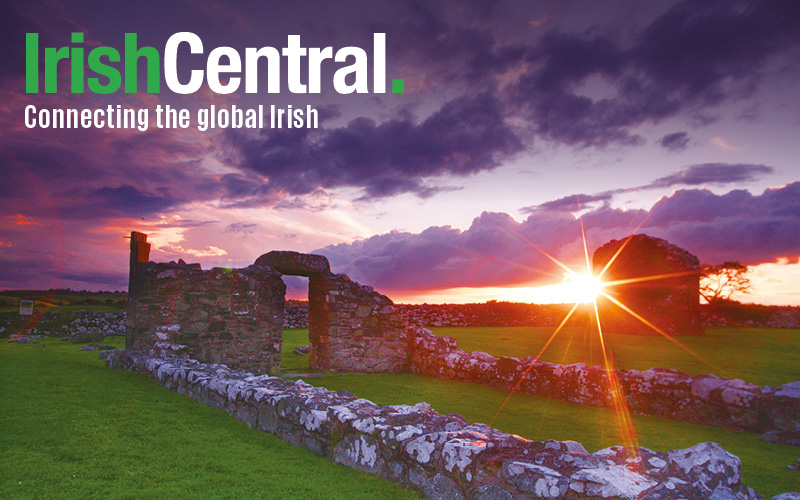Irish-born Civil War-era photographer Timothy H. O'Sullivan was born in 1840 and emigrated to the United States two years later. Though he died of tuberculosis at just 42 years of age, he left behind a fascinating collection of images captured during the war and afterwards as the United States expanded west.
A captured Confederate encampment near Petersburg, Virginia in June of 1864. (Timothy H. O'Sullivan/LOC)
Old Mission Church, Zuni Pueblo, New Mexico. View from the plaza in 1873. (Timothy O'Sullivan/Library of Congress)
As a teenager, O'Sullivan apprenticed with photographic pioneer Matthew Brady. When war was declared in 1861, he enlisted in the Union Army and took photographs in his spare time.
African Americans prepare cotton for a cotton gin on Smith's plantation, Port Royal Island, South Carolina, in 1862. (AP Photo/Library of Congress/Timothy H. O'Sullivan)
After being discharged in 1862, O'Sullivan rejoined Brady's team. Later that year, he followed Maj. Gen. John Pope's Northern Virginia Campaign. O'Sullivan joined forces with Scottish photographer Alexander Gardner (himself a former Brady photographer) and published 44 of his images in Gardner's "Photographic Sketch Book of the War."
Boat crew of the "Picture" at Diamond Creek. Photo shows photographer Timothy O'Sullivan, fourth from left, with fellow members of the Wheeler survey and Native Americans, following ascent of the Colorado River through the Black Canyon in 1871 (Timothy O'Sullivan/Library of Congress)
"A harvest of death", a famous scene from the aftermath of the Battle of Gettysburg, in Pennsylvania, in July of 1863 (Timothy H. O'Sullivan/LOC)
In July 1863, O'Sullivan captured his most famous image, which he titled "The Harvest of Death." The haunting photograph depicts the Gettysburg battlefield strewn with the bodies of dead soldiers.
A party of the 50th New York Engineers builds a road on the south bank of the North Anna River, near Jericho Mills, Virginia, on May 24, 1864. (Timothy H. O'Sullivan/LOC)
Shoshone Falls, Snake River, Idaho. A view across top of the falls in 1874. (Timothy O'Sullivan/Library of Congress)
After the war, O'Sullivan served as the official photographer for the United States Geological Exploration of the Fortieth Parallel from 1867 to 1869. His assignment was to capture images of the American West that would attract settlers. He created an important record of prehistoric ruins, Native American weavers and pueblo villages.
In 1867, O'Sullivan traveled to Virginia City, Nevada to document the activities at the Savage and the Gould and Curry mines on the Comstock Lode. Working nine hundred feet underground, O'Sullivan photographed the miners in tunnels, shafts, and lifts. (Timothy O'Sullivan/National Archives and Records Administration)
A dead Confederate sharpshooter at the foot of Little Round Top at the Battle of Gettysburg in 1863. (Timothy H. O'Sullivan/LOC)
After joining a surveying team in Panama to assess the difficulty of digging a canal in the isthmus, O'Sullivan returned to photograph the American West, jointing Lt. George Wheeler's survey team. After facing near-starvation when his survey boat capsized on the Colorado River, O'Sullivan accepted a post with the U.S. Geological Survey in Washington, D.C.
The Pyramid and Domes, a line of dome-shaped tufa rocks in Pyramid Lake, Nevada, seen in 1867. (Timothy O'Sullivan/Library of Congress)
Nearly 150 years ago, O'Sullivan came across a Spanish inscription from 1726. This close-up view of the inscription carved in the sandstone at Inscription Rock (El Morro National Monument), New Mexico reads, in English: "By this place passed Ensign Don Joseph de Payba Basconzelos, in the year in which he held the Council of the Kingdom at his expense, on the 18th of February, in the year 1726". (Timothy O'Sullivan/Library of Congress)




Comments